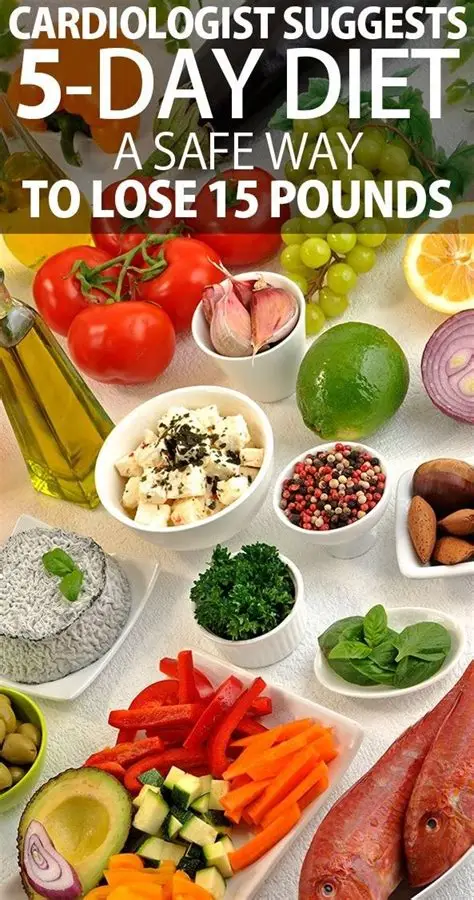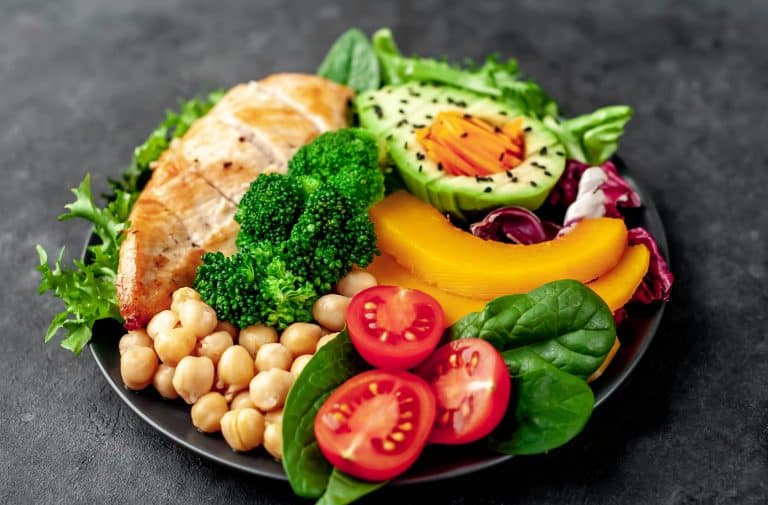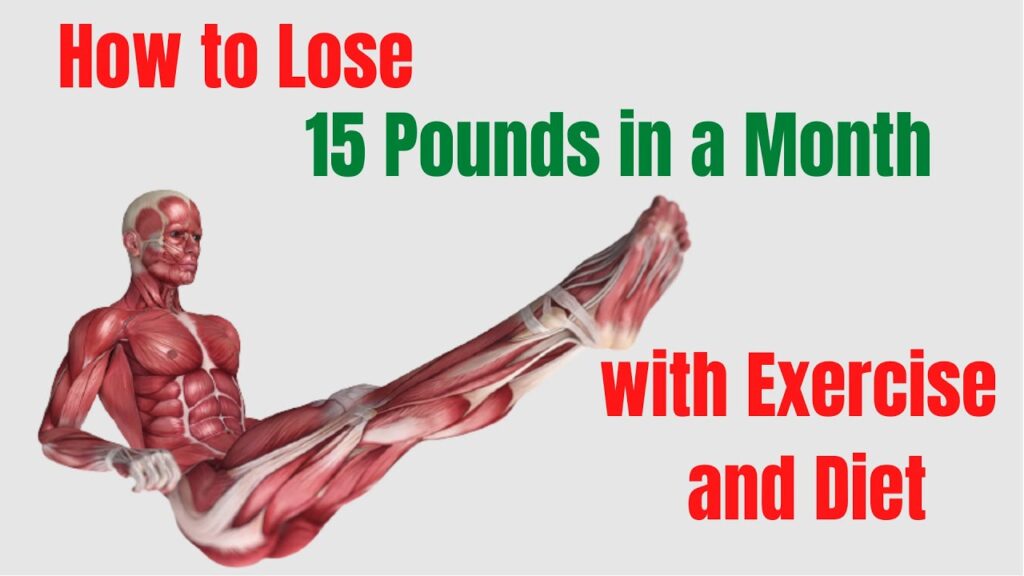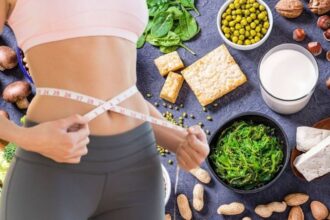Unleash Your Vigor: 4 Turbo-Charged, Flavor-Packed Diets to Melt 15 Pounds and Feel Unstoppable is a comprehensive guide to rapid, sustainable fat loss. At ihoxi.xyz, we bring you high-energy, nutrient-packed meal plans designed to accelerate metabolism, enhance vitality, and help you shed 15 pounds while enjoying every bite.
Diet 1: Protein-Powered Breakfasts
Start your day with a high-protein meal to boost metabolism and control cravings. Options like eggs, Greek yogurt, or protein smoothies fuel your energy for the day ahead. Learn more about protein benefits at Healthline: High-Protein Breakfasts.
Diet 2: Colorful, Fiber-Rich Lunches
Lunches loaded with vegetables, legumes, and whole grains provide fiber, vitamins, and minerals. These meals keep you full and maintain energy levels. Check out healthy lunch ideas at Medical News Today: Healthy Lunch Ideas.
Diet 3: Flavorful, Lean Dinners
Dinner should be satisfying yet light. Lean proteins such as chicken, fish, or tofu combined with steamed vegetables and herbs provide nutrition without excess calories. Explore lean dinner recipes at EatingWell: Lean Dinner Recipes.
Diet 4: Smart Snacking Strategies
Snack strategically to prevent energy crashes and overeating. Nuts, seeds, fruits, or small protein bars keep metabolism active and cravings in check. Learn more about healthy snacks at Healthline: Healthy Snacks.

Hydration Tips for Maximum Energy
Drinking adequate water and herbal teas supports metabolism, digestion, and fat loss. Infused water with lemon or cucumber also adds flavor and detoxifying benefits.
Local Nutrition and Fitness Resources
Finding nearby gyms, nutritionists, and wellness centers can enhance your results. Use this map to locate top fitness and diet facilities in your area: https://www.google.com/maps/embed?pb=!1m18!1m12!1m3!1d3153.0861994427893!2d-122.41941508468188!3d37.77492927975921!2m3!1f0!2f0!3f0!3m2!1i1024!2i768!4f13.1!3m3!1m2!1s0x8085808c5e3f97a7%3A0xbdb5d4e8a03e2dd4!2sSan%20Francisco%20Fitness%20Center!5e0!3m2!1sen!2sus!4v1696352967890
Turbo-Charged Morning Smoothies
Kickstart your metabolism with nutrient-packed morning smoothies. Combining fruits, vegetables, and a protein source provides sustained energy and primes your body for fat burning throughout the day.
Spicing Up Meals to Enhance Fat Loss
Adding spices like cayenne, turmeric, and cinnamon to meals can slightly boost metabolism and add bold flavor without extra calories. Spicing your diet keeps it exciting while supporting fat loss goals.
Batch Cooking for Convenience
Preparing meals in advance ensures you stay on track and avoid unhealthy food choices. Batch cooking supports consistent adherence to your diet plan and reinforces healthy habits.
Balancing Macros for Maximum Energy
Maintaining the right balance of protein, carbohydrates, and healthy fats throughout the day stabilizes blood sugar, improves satiety, and sustains energy levels for daily activities and workouts.
Incorporating Leafy Greens Daily
Leafy greens such as spinach, kale, and Swiss chard provide fiber, antioxidants, and essential vitamins. Eating greens daily improves digestion and enhances the fat-burning effects of your diet.
Healthy Fats for Satiety and Hormone Support
Foods like avocado, nuts, and olive oil provide essential fatty acids, helping regulate hormones and keeping you full longer. Healthy fats are a crucial component of sustainable fat loss.
Pre-Workout Nutrition for Peak Performance
Eating a balanced snack with complex carbs and protein before exercise enhances energy, endurance, and workout efficiency. Proper pre-workout nutrition maximizes calorie burn and fat loss.
Post-Workout Recovery Meals
Consuming protein and complex carbs after workouts supports muscle recovery and replenishes glycogen. Post-workout meals help preserve lean muscle while accelerating fat loss.
Hydration Strategies Throughout the Day
Staying hydrated improves metabolism, energy, and digestion. Drinking water consistently, herbal teas, or electrolyte beverages complements your diet and enhances fat-burning results.
Mindful Eating Techniques
Eating slowly, chewing thoroughly, and focusing on hunger signals improves satiety and prevents overeating. Mindful eating encourages better food choices and reinforces healthy eating patterns.
Leveraging High-Fiber Foods
Fiber-rich foods such as beans, legumes, whole grains, and vegetables slow digestion, improve gut health, and maintain fullness, supporting weight loss and boosting energy levels.
Meal Timing to Support Fat Loss
Eating strategically around workouts and high-energy periods optimizes metabolism and promotes efficient fat burning. Timing meals effectively enhances overall results from your diet plan.
Incorporating Lean Protein Sources
Chicken, fish, tofu, eggs, and legumes provide lean protein to maintain muscle mass, increase satiety, and support metabolism. Lean protein is essential for sustainable fat loss.
Using Superfoods for Optimal Nutrition
Incorporating antioxidant-rich foods like blueberries, chia seeds, and green tea strengthens immunity, improves metabolism, and provides energy, amplifying the effects of your diet plan.
Active Recovery for Better Results
Light activities like walking, yoga, or swimming on rest days maintain calorie burn, reduce stress, and improve circulation. Active recovery supports fat loss while preventing workout burnout.
Boost Your Metabolism with Morning Cardio
Starting your day with a short 20–30 minute cardio session increases calorie burn, stimulates energy, and enhances fat metabolism. Pairing morning cardio with your diet plan ensures you stay energized throughout the day and accelerate weight loss results.
Protein-Packed Snacks for Sustained Energy
Incorporating snacks such as boiled eggs, Greek yogurt, or protein bars between meals stabilizes blood sugar, prevents energy crashes, and supports lean muscle retention. Smart snacking helps you stay consistent with your fat-loss journey.
Flavorful Meal Prep Techniques
Using herbs, spices, and citrus juices during meal prep keeps meals exciting and nutrient-dense. Creative meal prep reduces reliance on processed foods and ensures adherence to your healthy eating plan.
Leveraging Resistance Training for Fat Loss
Strength training builds lean muscle mass, which increases resting metabolism and enhances calorie burn. Incorporating resistance workouts alongside your diet accelerates fat loss and shapes your physique.
Optimizing Hydration with Electrolytes
Adding natural electrolytes from coconut water or herbal drinks helps maintain hydration, prevent fatigue, and support muscle function. Proper hydration enhances energy levels and boosts overall diet efficiency.
Mindful Eating for Portion Control
Slowing down during meals, savoring flavors, and listening to hunger cues prevents overeating. Mindful eating encourages better food choices and supports long-term adherence to your dietary goals.
Incorporating Seasonal Produce
Eating fruits and vegetables that are in season ensures higher nutrient density and flavor. Seasonal produce enriches your meals and supports metabolism, energy, and overall health.
Using High-Intensity Interval Training (HIIT)
HIIT alternates bursts of intense activity with rest periods, boosting metabolism and accelerating calorie burn. Integrating HIIT with your diet plan maximizes fat loss in less time.
Balancing Macronutrients Throughout the Day
Consuming the right ratios of proteins, carbohydrates, and fats keeps energy steady and supports optimal fat metabolism. Balanced meals prevent cravings and enhance the effectiveness of your diet strategy.
Including Fermented Foods for Gut Health
Foods like yogurt, kefir, sauerkraut, and kimchi promote gut microbiome health, improve digestion, and enhance nutrient absorption. Gut health supports metabolism and overall well-being.
Pre-Workout Snacks for Performance
Consuming a small snack containing complex carbs and protein before exercise boosts energy, endurance, and focus. Proper pre-workout nutrition maximizes calorie burn and supports your weight-loss goals.
Post-Workout Recovery Nutrition
Eating protein and carbs after exercise helps repair muscles and restore glycogen stores. Post-workout meals are essential to maintain lean muscle while accelerating fat loss.
Incorporating Lean Proteins in Every Meal
Lean proteins such as chicken, fish, tofu, and legumes preserve muscle mass, improve satiety, and support metabolism. Consistently including lean protein optimizes your weight-loss results.
Utilizing Healthy Fats for Hormonal Balance
Avocado, olive oil, nuts, and seeds provide essential fatty acids that regulate hormones and energy levels. Including healthy fats supports long-term adherence to your diet and boosts vitality.
Meal Rotation to Prevent Plateaus
Rotating ingredients and recipes ensures nutrient variety, prevents diet fatigue, and keeps metabolism active. Meal rotation is a strategic method to enhance ongoing weight-loss success.
Green Smoothies for Nutrient Boost
Blending leafy greens, fruits, and protein into smoothies provides a quick, nutrient-dense meal option. Green smoothies enhance energy, improve digestion, and support your fat-loss journey.
Reducing Processed Foods for Clean Energy
Minimizing processed foods lowers empty calorie intake, stabilizes blood sugar, and prevents energy crashes. Clean eating supports consistent results and overall health improvement.
Incorporating Spices for Metabolic Boost
Cayenne pepper, ginger, turmeric, and cinnamon slightly increase thermogenesis, helping burn calories more efficiently. Using spices makes meals flavorful while enhancing fat metabolism.
Tracking Progress for Motivation
Monitoring weight, measurements, and energy levels helps maintain accountability and motivation. Tracking progress allows you to adjust strategies and reinforces consistency in your plan.
Using Mindset Techniques for Adherence
Positive thinking, visualization, and goal-setting improve motivation and help overcome challenges. Strengthening mindset is a critical component to maintain adherence to your diet strategy.
Incorporating Fiber-Rich Foods for Fullness
High-fiber foods such as vegetables, legumes, and whole grains increase satiety, improve digestion, and stabilize blood sugar. Fiber supports weight loss and overall energy throughout the day.
Cheat Meals to Support Long-Term Success
Planned cheat meals prevent diet fatigue, boost motivation, and provide psychological relief. Occasional indulgence, when controlled, can coexist with your weight-loss strategy.
Meal Timing Around Workouts
Eating meals at strategic times before and after workouts optimizes energy, performance, and recovery. Effective meal timing enhances metabolism and amplifies fat-loss results.
Hydrating Foods for Energy and Satiety
Fruits and vegetables with high water content, such as cucumbers, watermelon, and oranges, maintain hydration, improve digestion, and keep you full, complementing your diet plan.
Active Recovery for Fat Loss Continuity
Low-intensity activities such as walking, yoga, or stretching on rest days keep metabolism elevated, prevent burnout, and support consistent progress towards fat loss.

Maximizing Fat Loss with Morning Stretching
Starting your day with 10–15 minutes of stretching improves circulation, increases energy, and primes your body for fat-burning activities. Stretching complements your diet plan by reducing muscle stiffness and enhancing workout efficiency.
Incorporating Low-Calorie, High-Volume Foods
Foods like leafy greens, zucchini noodles, cauliflower rice, and broth-based soups provide volume and satiety with fewer calories. High-volume foods help you feel full while supporting weight loss.
Using Smart Meal Swaps
Replace high-calorie ingredients with healthier alternatives. For example, use Greek yogurt instead of sour cream or spiralized vegetables instead of pasta. Smart swaps reduce calorie intake without sacrificing flavor or satisfaction.
Timing Caffeine for Energy Boost
Consuming caffeine strategically before workouts can increase alertness, endurance, and calorie burn. Coffee or green tea consumed at the right time complements your energy-focused diet strategy.
Boosting Recovery with Anti-Inflammatory Foods
Incorporate foods like turmeric, ginger, berries, and fatty fish to reduce inflammation and improve recovery. Anti-inflammatory nutrition supports consistent exercise and accelerates fat-loss results.
Leveraging Meal Prep Containers for Portion Control
Using portioned meal containers ensures correct servings and reduces accidental overeating. Meal prep containers reinforce consistency and adherence to your diet plan.
Snack Pairing for Sustained Energy
Pairing protein with fiber-rich snacks, such as apple slices with almond butter or carrots with hummus, stabilizes blood sugar and prevents mid-afternoon energy crashes.
Exploring Global Flavor Profiles
Incorporating international spices and cuisines keeps meals exciting while maintaining calorie control. Flavor exploration prevents diet fatigue and encourages long-term adherence.
Incorporating Resistance Bands for At-Home Workouts
Resistance bands provide versatile, portable strength training options. Adding resistance training at home increases lean muscle mass and supports long-term fat loss.
Optimizing Sleep for Hormonal Balance
Quality sleep of 7–9 hours regulates appetite hormones and improves energy. Proper sleep enhances adherence to diet and workout routines and maximizes fat-loss efficiency.
Using Citrus for Flavor and Metabolism Boost
Adding lemon, lime, or orange to meals and drinks enhances taste while providing antioxidants and vitamin C. Citrus fruits slightly stimulate metabolism and keep your diet refreshing.
Hydrating with Infused Water
Infusing water with fruits, herbs, or cucumber adds flavor and encourages hydration. Staying hydrated aids digestion, metabolism, and overall energy levels throughout the day.
Balancing Micronutrients for Optimal Health
Ensuring adequate intake of vitamins and minerals from diverse foods supports metabolism, immunity, and recovery. Balanced micronutrients enhance the overall effectiveness of your diet plan.
Incorporating Quick Home Workouts
Short, intense home workouts like bodyweight circuits or jump rope sessions boost metabolism and calorie burn. These exercises complement your diet for faster results and convenience.
Tracking Non-Scale Progress
Monitoring improvements in energy, strength, endurance, and clothing fit helps maintain motivation. Tracking non-scale progress provides a holistic view of success beyond the numbers on the scale.
Frequently Asked Questions (FAQs)
1. What are Turbo-Charged diets?
Turbo-Charged diets are high-energy, nutrient-rich meal plans designed to accelerate metabolism and support rapid fat loss.
2. How do Turbo-Charged meals boost energy?
Turbo-Charged meals contain balanced macros, lean proteins, and complex carbs, which provide sustained energy throughout the day.
3. Can Turbo-Charged diets help me lose 15 pounds quickly?
Yes, when combined with regular exercise and proper hydration, Turbo-Charged diets can accelerate fat loss and support your weight-loss goals.
4. Are Turbo-Charged diets suitable for beginners?
Absolutely. Turbo-Charged diets can be tailored to beginners with simple, easy-to-prepare meals and gradual calorie adjustments.
5. Do Turbo-Charged diets require supplements?
Not necessarily. Most Turbo-Charged diets focus on whole foods, though optional protein powders or vitamins may be used for convenience.
6. How long should I follow a Turbo-Charged diet?
For optimal results, follow a Turbo-Charged diet consistently for 4–12 weeks, adjusting based on progress and individual needs.
7. Can Turbo-Charged diets be vegetarian or vegan?
Yes, Turbo-Charged diets can be customized with plant-based proteins, legumes, and vegetables to meet vegetarian or vegan preferences.
8. How do Turbo-Charged diets affect metabolism?
Turbo-Charged diets stimulate metabolism through protein-rich meals, frequent small meals, and energy-boosting nutrient combinations.
9. Are Turbo-Charged diets safe for people with medical conditions?
Consult a healthcare professional before starting any Turbo-Charged diet if you have medical conditions or take medications.
10. How do I prevent fatigue on a Turbo-Charged diet?
Ensure balanced meals with carbs, proteins, fats, and hydration to maintain energy levels while following a Turbo-Charged diet.
11. Can Turbo-Charged diets help with muscle retention?
Yes, high-protein Turbo-Charged meals support lean muscle mass while promoting fat loss.
12. How does hydration complement a Turbo-Charged diet?
Drinking enough water and electrolyte-rich beverages enhances digestion, metabolism, and overall energy while following a Turbo-Charged diet.
13. Can Turbo-Charged diets be combined with intermittent fasting?
Yes, Turbo-Charged meals can fit into intermittent fasting schedules by providing nutrient-dense meals during eating windows.
14. Are Turbo-Charged snacks recommended?
Yes, snacks like nuts, protein bars, or fruits maintain energy and prevent overeating while adhering to a Turbo-Charged diet.
15. Can Turbo-Charged diets help reduce cravings?
Yes, nutrient-rich meals and strategic snacks help regulate blood sugar and reduce cravings on a Turbo-Charged diet.
16. How do I measure success on a Turbo-Charged diet?
Track weight, measurements, energy levels, and overall well-being to monitor progress while following a Turbo-Charged diet.
17. Can I eat out while on a Turbo-Charged diet?
Yes, choose lean proteins, vegetables, and whole grains when eating out to stay on track with your Turbo-Charged plan.
18. How do Turbo-Charged diets support fat loss?
They combine calorie control, nutrient density, and metabolism-boosting foods to maximize fat-burning potential.
19. Are Turbo-Charged diets suitable for all ages?
Turbo-Charged diets can be adapted for adults of various ages, but children and older adults should consult a professional first.
20. How do Turbo-Charged diets affect digestion?
High-fiber foods in Turbo-Charged diets improve digestion, promote satiety, and support overall gut health.

21. Can Turbo-Charged diets improve mental focus?
Yes, balanced meals with complex carbs, proteins, and healthy fats stabilize blood sugar and support sustained mental clarity.
22. How do I stay motivated on a Turbo-Charged diet?
Set realistic goals, track progress, and vary meals to maintain excitement while following a Turbo-Charged diet.
23. Do Turbo-Charged diets require calorie counting?
Not always. Focusing on nutrient-dense, portion-controlled meals often suffices to achieve results without strict calorie counting.
24. Can Turbo-Charged diets improve overall health?
Yes, they provide essential nutrients, support weight loss, enhance energy, and reduce risk factors for chronic disease.
25. Are Turbo-Charged diets sustainable long-term?
With proper planning, flexibility, and variety, Turbo-Charged diets can be maintained long-term for continued health and vitality.





